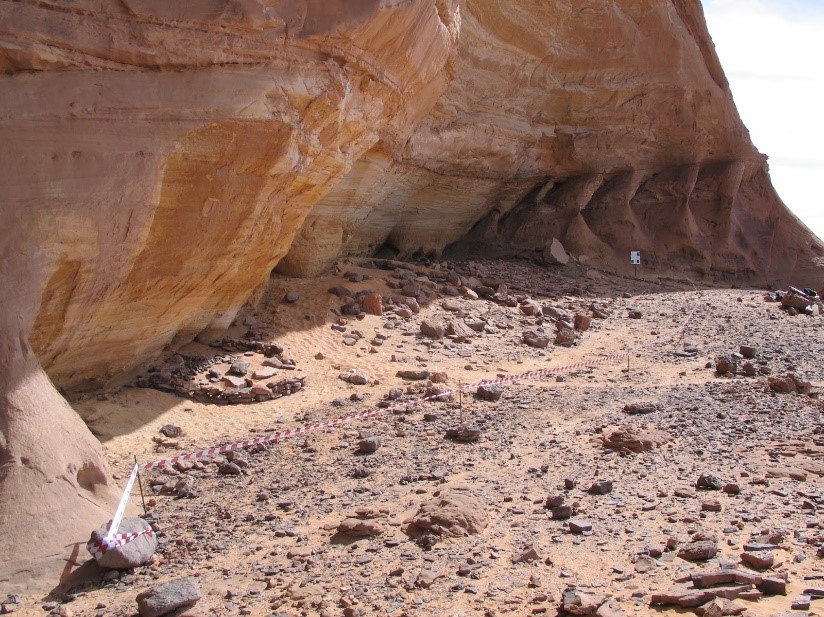Two 7,000-year-old mummies belong to a previously unknown human lineage that remained isolated in North Africa for thousands of years, a new study finds.
The mummies are the remains of women who once lived in the “Green Sahara,” also known as the African Humid Period. Between 14,500 and 5,000 years ago, the now-inhospitable Sahara was a humid and verdant savanna, home to humans who hunted and eventually herded animals alongside lakes and rivers.
DNA from the two mummies revealed that the never-before-seen North African lineage was distinct and isolated from populations living in sub-Saharan Africa around the same time. The findings, reported April 2 in the journal Nature, suggest there was little genetic exchange across the Green Sahara during this time, though some cultural practices may have spread through the region.
Between 2003 and 2006, archaeologists unearthed the remains of 15 individuals in the Takarkori rock shelter, located near the middle of the Sahara in what is now southwestern Libya. The site included evidence of human occupation and pastoralism, or herding, dating back more than 8,000 years. Of the 15 individuals, most of whom were women and children, two had naturally mummified, which helped preserve their DNA.
“We were very fortunate to have samples preserved at this level,” study co-author Nada Salem, a paleogeneticist at the Max Planck Institute for Evolutionary Anthropology in Germany, told Science magazine. The region’s high temperatures can quickly break down the DNA in human remains, leaving few examples of ancient DNA in the region.
A 2019 study examined mitochondrial DNA from the same remains. However, mitochondrial DNA, which is only inherited from the mother, doesn’t provide as much information about population dynamics as DNA from chromosomes, which is inherited from both parents. To obtain this genome-wide data, the researchers extracted preserved DNA from the mummified remains and compared it with DNA from about 800 present-day individuals from Africa, the Near East and southern Europe, along with 117 ancient genomes from the same regions.
Related: Could the Sahara ever be green again?
The Takarkori individuals possessed genetic markers distinct from populations in sub-Saharan Africa, the team found, suggesting they were from a previously unknown and relatively isolated lineage that diverged from sub-Saharan African populations some 50,000 years ago. But the individuals did have some ancestors from the Levant, a stretch of land bordering the eastern Mediterranean Sea. The Takarkori DNA also showed traces of Neanderthal ancestry that could only have been acquired outside of Africa, as Neanderthals lived in Eurasia. But the mummies’ genomes contained 10 times less Neanderthal DNA than those of people living outside of Africa today.

The findings suggest that the Green Sahara didn’t act as a migration corridor between sub-Saharan Africa and northern Africa. However, archaeological evidence suggests that cultural exchange between the regions did occur.
“We know now that they were isolated in terms of genetics, but not in cultural terms,” study co-author Savino di Lernia, an archaeologist at Sapienza University of Rome, told CNN. “There’s a lot of networks that we know from several parts of the continent, because we have pottery coming from sub-Saharan Africa. We have pottery coming from the Nile Valley and the like.”
The rise of pastoralism in the Sahara also likely arose from interactions with other groups that were raising domesticated animals at the time, rather than through large-scale migrations, the researchers suspected.
This isolated lineage no longer exists in its original form today, but at some point people from this lineage mingled with outsiders, which is why some people living in North Africa today have inherited pieces of this genetic heritage, the researchers found.
“By shedding light on the Sahara’s deep past, we aim to increase our knowledge of human migrations, adaptations, and cultural evolution in this key region,” di Lernia said in a statement.
